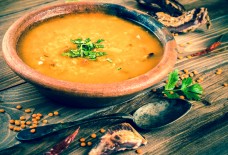Molokhia: An Ultra Healthy Green Leaf Vegetable, Once Banned as a Sexual Stimulant
By: Habeeb Salloum/Arab America Contributing Writer
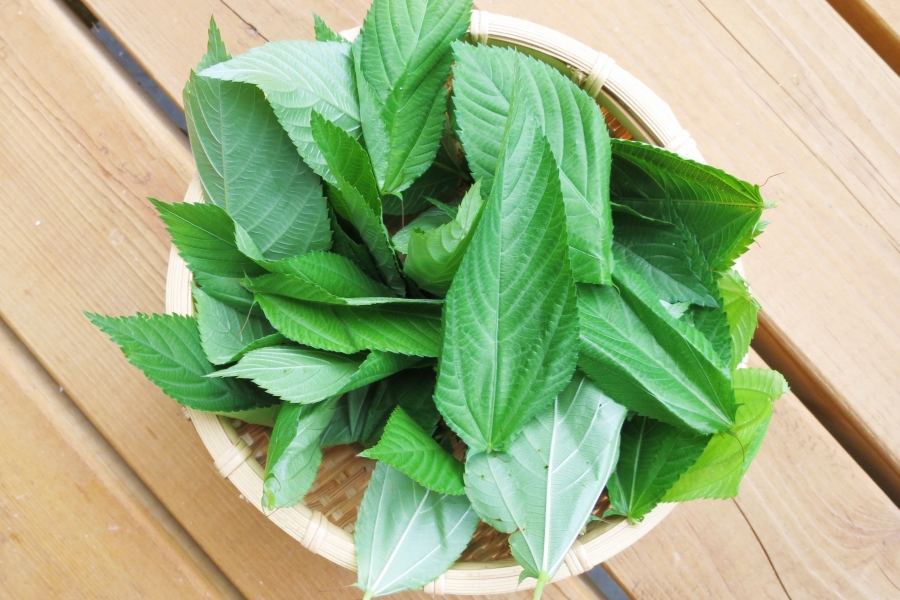
Molokhia, also found under the names meloukhia, melokhiya or milookhiyya, is a potherb that is better known in the English-speaking world as Spanish okra or Jew’s mallow. Its reputed land of origin is India, but it has always been widely grown in the Middle East and parts of Africa, especially Egypt and the Greater Syria area. Said to have been the favourite food of the ancient Egyptians, it is an ultra healthy green leaf green – called by some `the queen of vegetables’.
From the days of the pharaohs to our times, the taste for this vegetable has never left the historic land of Egypt. In that country, it continues to be the preferred food of both rich and poor alike. Those who can afford it, cook it with meat and those who cannot, cook it other vegetables. Molokhia is so much in demand that every farmer in the land grows his little patch for his own use or for sale.
Although not as prevalent as in Egypt, the cultivation of this spinach-like vegetable, is carried on in the Greater Syria area and Greece. However, in these parts of the eastern Mediterranean, unlike in Egypt where it is prepared as a soup, it is used as the main vegetable with meat and in vegetarian dishes.
Molokhia is an annual leafy vegetable from the Linden family and resembles both spinach and chard but has the food properties of okra. The plant grows about one foot tall and matures quickly. The deep green leaves, picked before the plant matures, are the edible part. If the leaves are not harvested when still green, the plant will produce small yellow flowers and long type of fruit. The leaves, which may be used fresh, frozen or dried for future use, are always removed from the stems before cooking. When purchased fresh, the stems form part of the weight, but they are always discarded.
Molokhia is a very healthy food, containing more potassium, phosphorus, carotin and vitamins A, B1, B2, and C, than in okra, beans, pumpkins, carrot, spinach, and parsley. Its strong components of valuable vitamins and minerals help in preventing geriatric diseases like diabetes, constipation, allergies, and headaches. Molokhia, as studies have been shown, may reduce cholesterol, improve circulation, lower blood pressure levels, help with digestion and possibly reduce the risk of cancer.
In other fields, molokhia has proved to be an ideal component for cosmetics, enriching some cosmetic formula products. It is used as an ingredient in facial creams, lotions, hair tonics and hand creams, and its use in beauty products is spreading.
On the other hand, besides being a healthy green, cooked in the Middle East from time immemorial, this exotic vegetable was once thought to be a sexual stimulant that made women stray into the arms of strange men. Al-Hakim bi-‘Amr Allah, a Fatimid Caliph of Egypt in the 10-11th centuries, banned molokhia because he believed it led men and women into a life of debauchery. Even if this was only a fantasy in the mind of the ruler, his followers, during his time, at least, shied away from using it. There are not many foods that can lay claim to such fame.
At one time it was almost impossible to find the fresh molokhia leaf in North America. However, since the 1960s, when many Egyptians emigrated to the West, this has changed. Today, in cities such as Toronto and Montreal, in Canada, where there are large Egyptian communities, the fresh leaf can be purchased in Arab stores and Mediterranean vegetable markets. In other centres where the fresh leaf is hard to come by, frozen and dried molokhia is in almost all Arab, Armenian, or Greek markets which sell eastern Mediterranean foods. Although not as tasty, it can always be substituted for the fresh, and when molokhia is not available, spinach may be used as an alternative.
Chicken Molokhia Soup
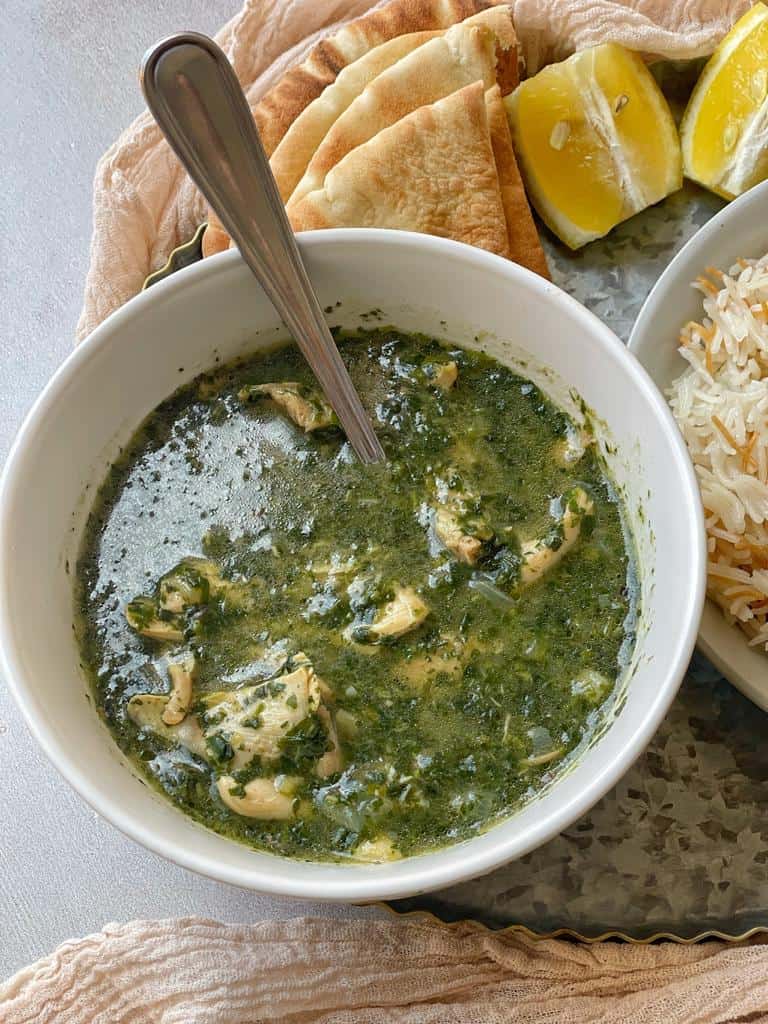
Serves about 8
In Egypt where the consumption of molokhia, per capita, is perhaps the highest in the world, this vegetable of the Pharaohs is the national dish.
3-4-pound chicken
3 medium onions, finely chopped
1 large potato, peeled and chopped
5 tomatoes, chopped
2 1/2 teaspoons salt
1 teaspoon black pepper
1/4 teaspoon allspice
8 cups water
leaves of 1-pound fresh molokhia, very finely chopped, or 1 cup
dried finely crushed molokhia
2 tablespoons lemon juice
4 tablespoons butter
1/2 head garlic, crushed
1/2 cup finely chopped coriander (cilantro)
l/8 teaspoon cayenne
Place chicken, onion, potato, tomatoes, salt, pepper, allspice, and water in a saucepan and cover then cook over medium heat until water boils. Lower heat and simmer until chicken is very tender.
Remove the chicken from stock and de-bone, then place meat on a serving platter with a little of the stock. Set aside but keep warm.
Add the molokhia and lemon juice to the saucepan stock, then cover and simmer for 20 minutes, stirring occasionally and adding more water if necessary.
In the meantime, melt butter in a frying pan, then add garlic, coriander and cayenne and sauté until garlic turns brown. Add frying pan contents to stock then cook for a few minutes before serving. Adjust seasoning if necessary.
Serve molokhia as a soup with cooked rice (see cooked rice recipe below) and the reserved chicken.
Note: Beef, lamb, rabbit, or any other meat may be substituted for the chicken.
Cooked Rice
Serves about 8
4 tablespoons butter
2 cups rice, rinsed
4 cups boiling water
3/4 teaspoon salt
Melt butter in a frying pan then add rice. Stir-fry for a few minutes until rice is well coated with butter. Add water and salt and bring to boil then reduce heat to low and cover. Cook for about 20 minutes, stirring several times to ensure that rice does not stick to bottom of pan the re-cover. Turn off heat and allow rice to cook in its own steam for 30 minutes.
Vegetable Molokhia Soup
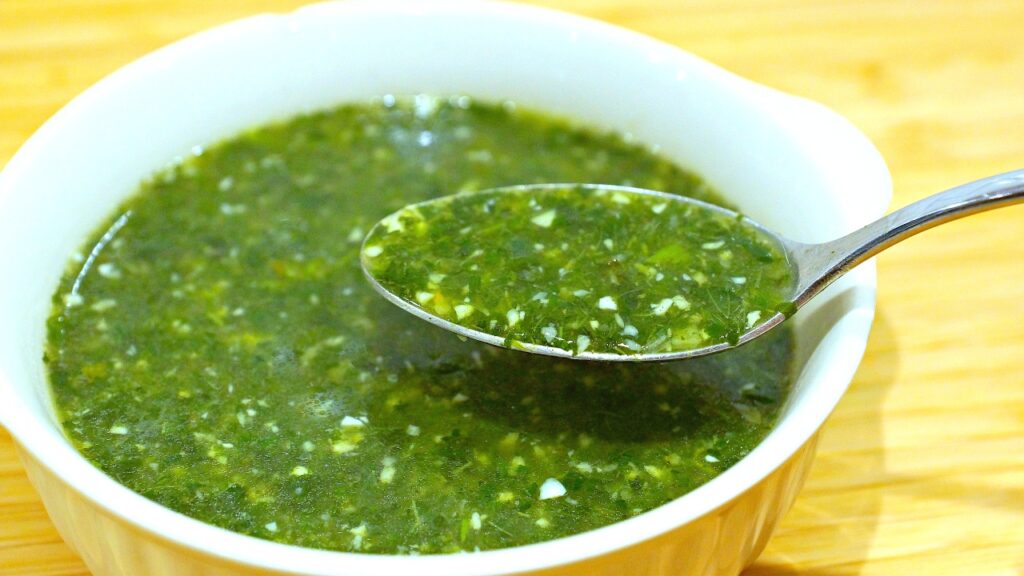
Serves about 8
The very poor in Egypt boil a few vegetables to form the stock for their daily molokhia. However, to its lovers, this vegetable version is as delicious as the one cooked with meat.
1 large potato, peeled and chopped into large pieces
1 medium carrot, peeled and chopped into small pieces
1 small yellow turnip, peeled and chopped into small pieces
1 medium zucchini, chopped into large pieces
3 large tomatoes, chopped into large pieces
2 medium onions, chopped into small pieces
2 teaspoons salt
1 teaspoon black pepper
1 teaspoon cumin
1/2 teaspoon allspice
7 cups water
leaves of 1/2 pound fresh molokhia, very finely chopped, or 1 cup dried finely crushed molokhia
4 tablespoons butter
1/2 head garlic, crushed
1/2 cup finely chopped coriander (cilantro)
l/8 teaspoon cayenne
Place the potato, carrot, turnip, zucchini, tomatoes, onion, salt, pepper, cumin, allspice, and water in a pot. Cover and cook over medium heat until water begins to boil, then reduce heat to low, cover and simmer until vegetables are tender.
Remove still firm vegetables with a slotted spoon then place on a serving platter. Set aside but keep warm.
Add molokhia to stock, then cover and simmer for 20 minutes, stirring occasionally, adding more water if necessary.
In the meantime, melt butter in a frying pan, then add garlic, coriander and cayenne and sauté until garlic is golden. Add frying pan contents to stock then simmer for a few moments, stirring occasionally. Adjust seasoning if required, then serve hot with the vegetables and cooked rice (see Cooked Rice recipe above) as a side dish.
Palestinian Molokhia
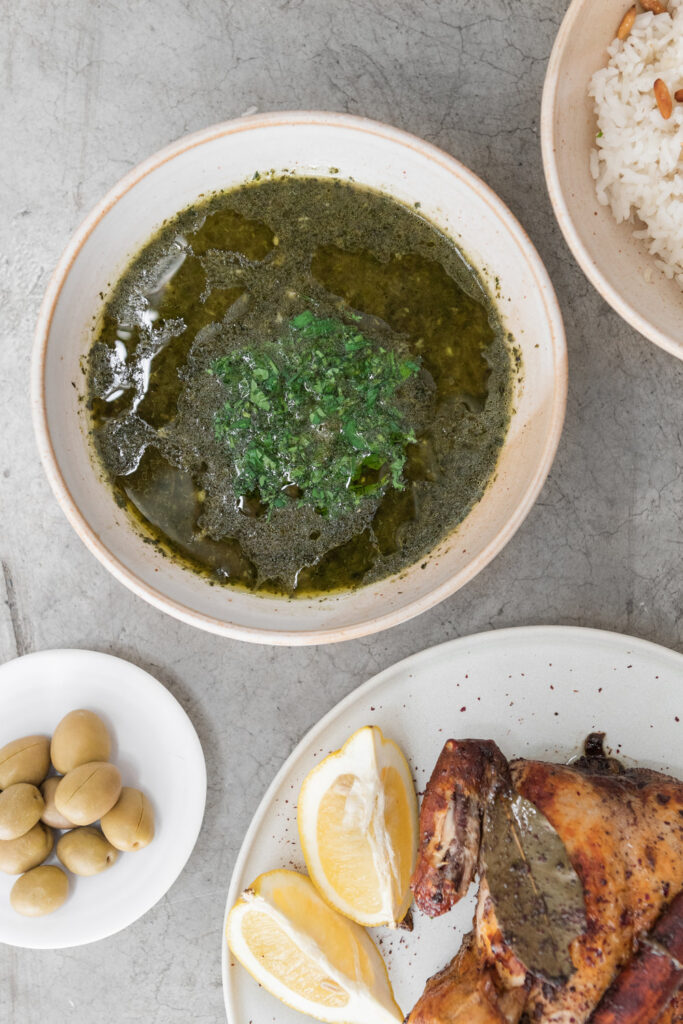
Serves about 8
Variants of this recipe are cooked in all the Greater Syria area of the Middle East. Many who have a fondness for molokhia believe the Palestinian method of cooking this vegetable is beyond all praise. There is no doubt that the most preferable way to begin a trip into the molokhia world is with this recipe.
3 ½- to- 4 pounds chicken drumsticks
2 1/2 teaspoons salt
flour
10 cups water
1 teaspoon cinnamon
4 cloves
4 cardamom pods, crushed
2 bay leaves
1 medium onion, chopped in large pieces
4 tablespoons butter
4 tablespoons olive oil
1 head of garlic, crushed
1/2 cup finely chopped coriander (cilantro)
1-pound fresh molokhia leaves
1 teaspoon black pepper
4 tablespoons lemon juice
1 loaf Arab (pita) bread, toasted and broken into small pieces
Cooked rice (see Cooked Rice recipe above)
Rub chicken pieces with 2 teaspoons of the salt then rinse with lukewarm water. Rub the chicken with flour then rinse again with lukewarm water.
Place chicken pieces in a large saucepan with the water, cinnamon, cloves, cardamom, bay leaves and onion, and bring to boil, cover then reduce heat to medium and cook until chicken is barely tender, about 45 minutes. Remove chicken from the stock with slotted spoon then set aside.
Strain stock, then return 4 cups of stock to the saucepan and set aside.
In a frying pan, melt the butter then add the oil then fry chicken over medium heat until golden, turning over once. Halfway through the frying process, stir in the garlic and coriander.
Remove chicken and place on a platter and keep warm.
Add to the stock in the saucepan the frying pan contents, the molokhia, remaining salt, pepper and lemon juice and bring to boil. Cover and cook over medium heat for 20 minutes. Transfer cooked molokhia to a serving bowl.
When serving, place a handful of toasted bread on a dining plate then place a layer of rice on top of bread. Spoon over the rice in each plate the molokhia with some of its juice. Finally, top with drumsticks.
Note: For a heightened taste, make a mixture consisting of 1/2 cup of table vinegar and one medium finely chopped Spanish onion, then place one to two tablespoons of this mixture (or to taste) over the molokhia for each serving.
The three recipes we have provided are only samples of dishes that are prepared with molokhia. They have been modified to some extent to suit North American taste. If one wishes to experiment a series of variations can be produced by adding or eliminating some of the spices.



